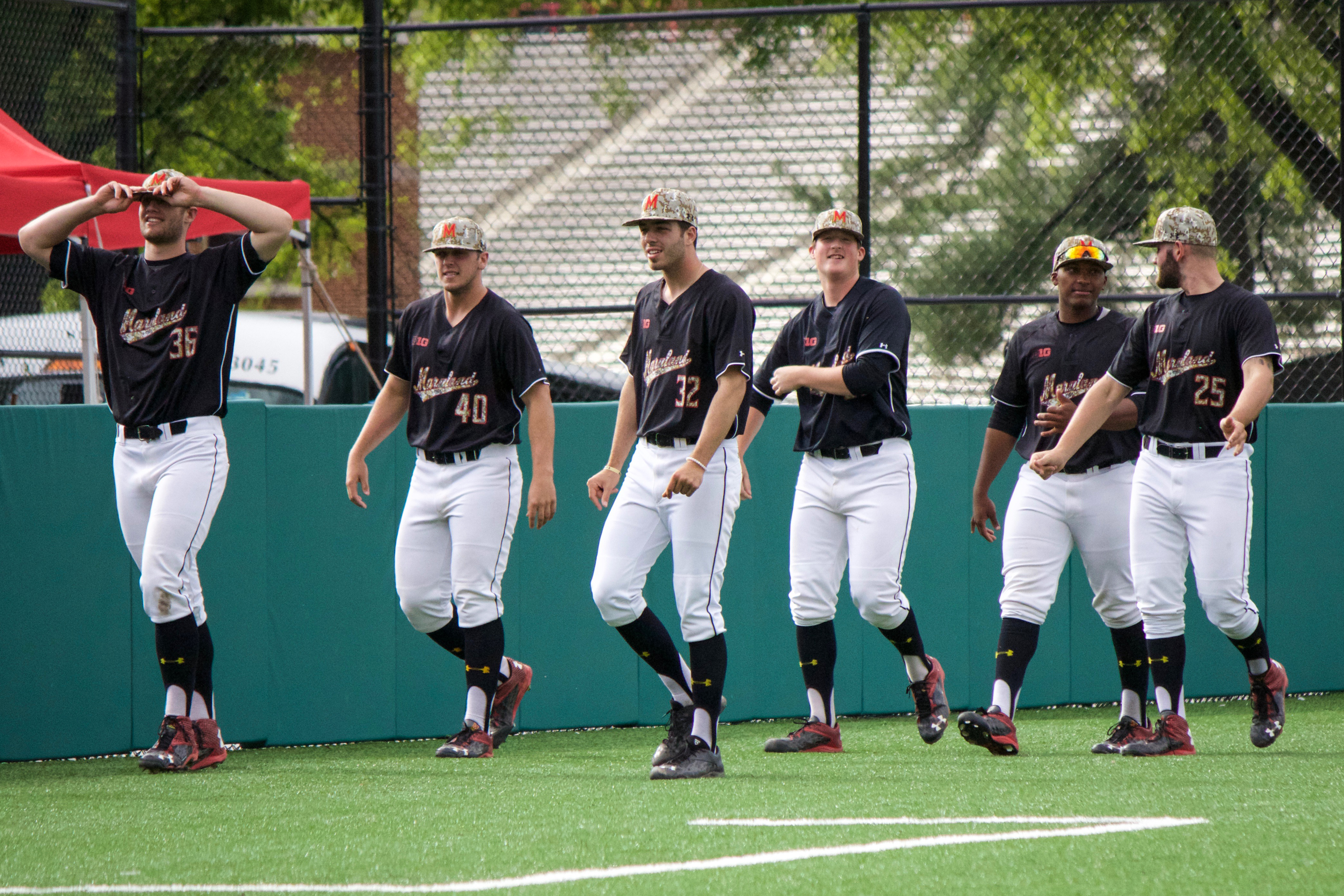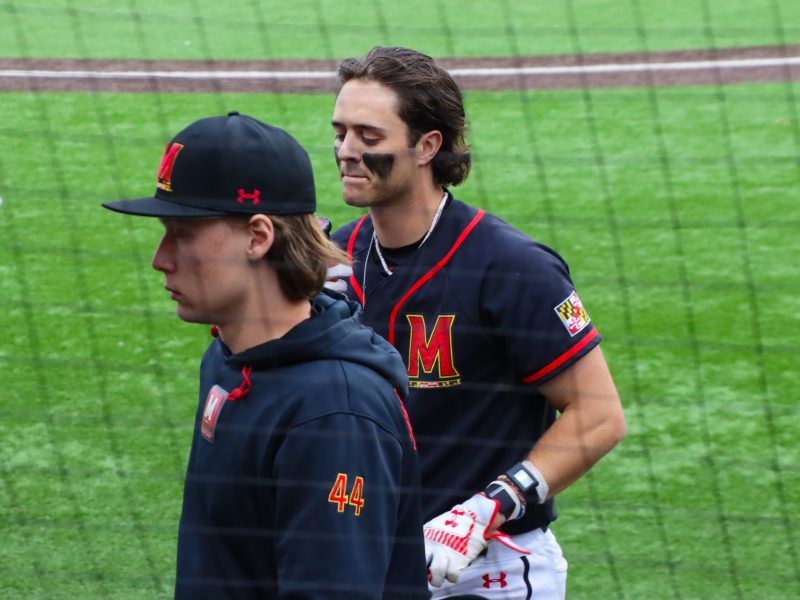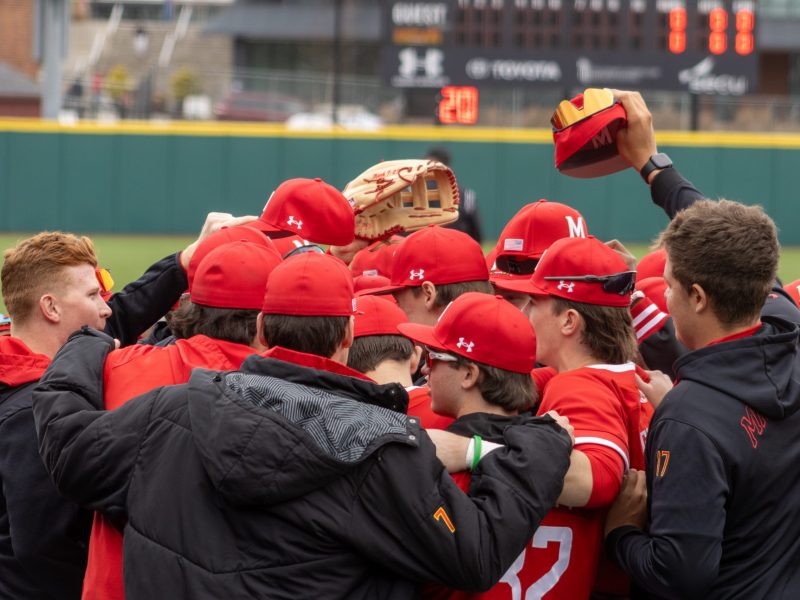After the Maryland baseball team’s two wins against Ohio State in a doubleheader April 8, coach John Szefc hoped the victories signaled the Terps were turning the corner on their season. Two weeks later, the fourth-year coach said his squad experienced one of its lowest points of the season after a loss to Purdue.
That type of inconsistency, which dragged on throughout the year, came as a result of a struggling offense and a shaky bullpen. After qualifying for the Super Regionals the past two seasons, the Terps failed to make the NCAA Tournament this year, therefore falling short of their goal of qualifying for the program’s first-ever College World Series.
“We had a lot of ups and downs,” Szefc said. “Our numbers reflect that. Our starting pitching has been good. Our issue at times has been not giving them enough run support.”
Maryland (30-27, 13-11 Big Ten), which was projected to finish second in the Big Ten by conference coaches, lost 10 players between the MLB draft and graduation last offseason.
Fifteen freshmen filled the roster this year, and it appeared to take time for the inexperienced Terps to get comfortable. Maryland didn’t get two wins over .500 until April 8.
“We should be scoring seven, eight runs a game with the offense that we have,” shortstop Kevin Smith said May 7. “In the beginning of the year, we were kind of putting pressure on ourselves.”
Outfielder Anthony Papio and Smith were the lone returning offensive players who started at least 40 contests last season. Still, the pair managed to hit just .261 and .259, respectively.
Two freshmen accounted for a lot of the production at the plate. Second baseman Nick Dunn held Maryland’s best batting average (.300), while outfielder Marty Costes led the squad in RBIs (37) and home runs (nine).
“Sometimes we’ll come out here, and we’re flat,” designated hitter Madison Nickens said April 23. “It’s a mental thing. We have to want to come to the ballpark and beat up on somebody. Sometimes we’re a little too passive instead of having an aggressive mindset.”
Despite having the third-worst batting average in the Big Ten (.256), the Terps had the luxury of quality starting pitching. Right-handers Taylor Bloom, Brian Shaffer and Mike Shawaryn held respective ERA’s of 2.46, 2.60 and 3.18 while throwing a combined 11 complete games. Aside from the trio, which doubled as Maryland’s weekend rotation, two pitchers held a sub-four ERA.
Maryland lost five relievers last offseason, leaving the Terps with just three healthy relievers who had experience throwing in the postseason. So Maryland struggled to maintain leads late in games, as the Terps had the third-fewest saves in the conference (nine).
“College baseball is so much about starting pitching and so much about strike throwers,” Szefc said. “It’s hard to beat a team if the pitcher is constantly charging you and is consistently in the zone. If you have a good start, you have a good chance to win. If you get a poor start, you got a pretty good chance to lose.”
Maryland was on the bubble to make the Field of 64 entering May but lost two of its final three conference series, This meant the team had to go deep into the Big Ten Tournament to earn a NCAA tournament berth.
Instead, the Terps finished 2-2 in the conference tournament and ended their season with an 11-0 loss to Iowa.
Though Maryland didn’t meet its goals this season, Szefc is optimistic about the young talent the Terps have in the program. They are losing just two players, Papio and left-hander Robert Galligan, to graduation, and Szefc believes most of Maryland’s top players will return next year with the aspirations of getting the program back in the NCAA Tournament field.
“As frustrating as it’s been at times, our guys have finished the season very strong,” Szefc said. “Our future is in good hands with a lot of good young players.”



